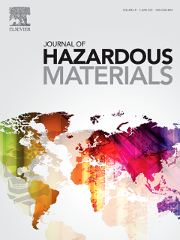- Home
- Department
- Research
- Teaching
- Post Graduate Studies
- Services and Equipment
- Knowledge Transfer
New publication - “Graphene environmental biodegradation: Wood degrading and saprotrophic fungi oxidize few-layer graphene”
Published on Journal of Hazardous Materials by research group of prof. Mauro Tretiach
News typology:
home
Abstract
The environmental biodegradability profile of graphene related materials (GRMs) is important to know in order to predict whether these materials will accumulate in soil or will be transformed by primary decomposers. In this study, few-layer graphene (FLG) was exposed to living and devitalized axenic cultures of two white-rot basidiomycetes (Bjerkandera adusta and Phanerochaete chrysosporium) and one soil saprotrophic ascomycete (Morchella esculenta) with or without lignin, for a period of four months. Over this time, the increase of fungal biomass and presence of H2O2 and oxidizing enzymes [laccase/peroxidase and lignin peroxidase (LiP)] in growth media was assessed by gravimetric and spectrophotometric measurements, respectively. Raman spectroscopy and transmission electron microscopy (TEM) were used to compare the structure of FLG before and after incubation. All of the test fungi decreased pH in growth media and released H2O2 and laccase/peroxidase, but only basidiomycetes released LiP. Independent of growth media composition all fungi were found to be capable to oxidize FLG to a graphene oxide-like material, including M. esculenta, which released only laccase/peroxidase, i.e. the most common enzymes among primary decomposers. These findings suggest that FLG involuntarily released into terrestrial environments would likely be oxidized by soil microflora.

Last update: 04-16-2021 - 11:38



